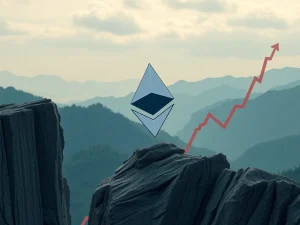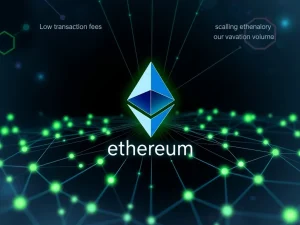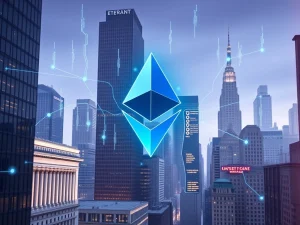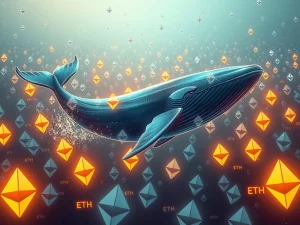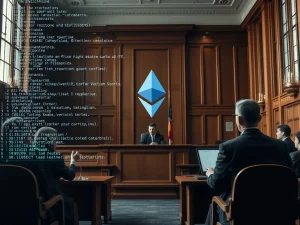Ethereum Testnet Sunset: Holesky Prepares for Critical Fusaka Upgrade
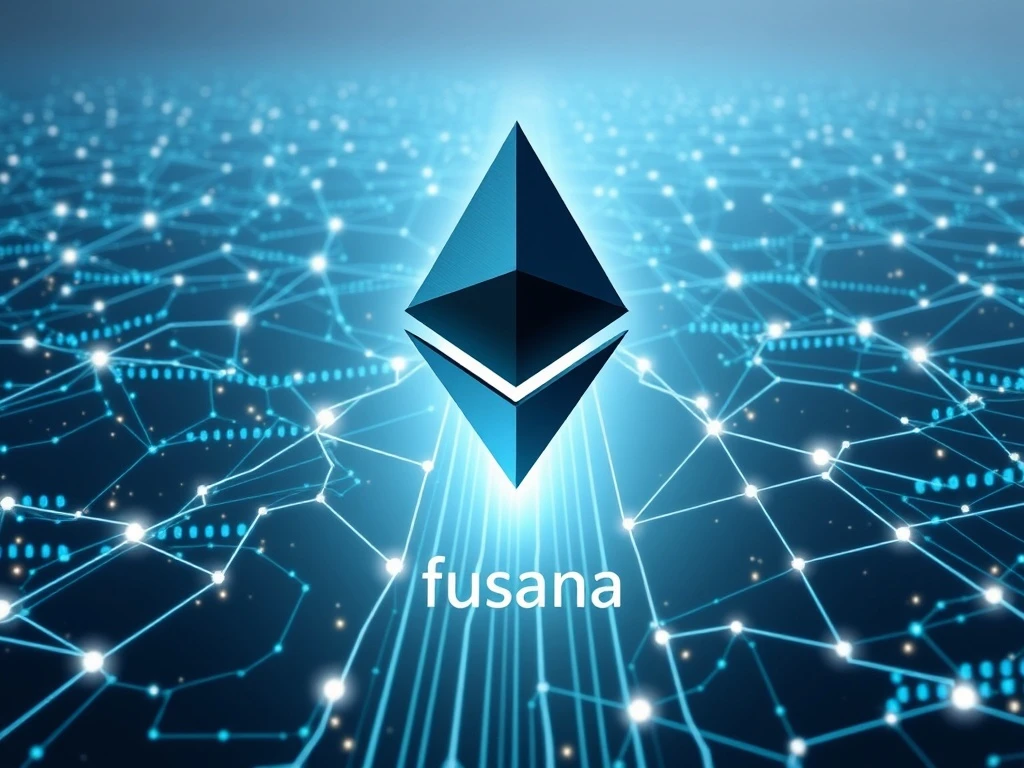
Ethereum’s relentless pursuit of innovation drives constant evolution. This journey now sees a significant transition in its testing infrastructure. The network’s largest testnet, Holesky, will soon shut down, making way for new environments. This planned decommissioning paves the path for the crucial Fusaka upgrade. The community remains committed to enhancing every network layer, ensuring a robust and efficient future for Ethereum.
The Legacy of Holesky: A Pivotal Ethereum Testnet
Launched in September 2023, Holesky served a vital role in the Ethereum ecosystem. This prominent Ethereum testnet was specifically tasked with rigorously testing staking infrastructure. It also validated critical validator operations. Holesky played an instrumental part in preparing the network for major upgrades. For instance, it facilitated the Dencun network upgrade. More recently, it supported the Pectra update. Thousands of validators relied on Holesky to test protocol changes. This ensured smooth transitions to the mainnet. Therefore, its contribution to Ethereum’s stability and progress is undeniable.
The Ethereum Foundation confirmed the upcoming Holesky shutdown. This move follows a planned end-of-life date. The testnet will cease operations two weeks after the Fusaka upgrade finalizes on the network. This timeline suggests a shutdown sometime in the second half of September. After this period, client, testing, and infrastructure teams will no longer support Holesky. Its purpose has been fulfilled, allowing the network to move forward with new, optimized testing environments.
Transitioning to Hoodi: A Fresh Start for Ethereum Testing
While Holesky proved invaluable, it encountered challenges in early 2025. Specifically, the testnet experienced extensive inactivity leaks. These issues led to a large exit queue, causing operational hurdles. Although Holesky eventually recovered, the need for a fresh, unburdened environment became clear. Consequently, the Ethereum Foundation launched the Hoodi testnet in March. Hoodi provides a clean slate, free from the prior issues that affected Holesky.
Hoodi now serves as the primary environment for future protocol upgrades. It already supports the Pectra update. Furthermore, it will activate upcoming forks, including Fusaka. One of the immediate next steps involves migrating all of Holesky’s staking operators. Infrastructure teams will also transition to Hoodi. This ensures continuity and leverages Hoodi’s enhanced stability. For smart contract and decentralized application (dApp) testing, the Ethereum Foundation currently recommends switching to Sepolia. This offers developers a reliable alternative for their development needs.
Unpacking the Fusaka Upgrade: Boosting Ethereum Scalability
The next significant hard fork for Ethereum is the Fusaka upgrade, also known as Fulu-Osaka. This pivotal update is scheduled for early November on the mainnet. Fusaka aims to significantly improve how rollups access data. It achieves this by distributing data availability workloads more efficiently across network validators. This technical enhancement offers several key benefits:
- Easier Node Operation: The changes could simplify the process of running nodes.
- Enhanced Decentralization: Improved data distribution fosters greater network decentralization.
- Boosted Layer-2 Scalability: Rollups will process transactions faster and at lower costs.
The Fusaka upgrade will consist of 11 distinct Ethereum Improvement Proposals (EIPs). Each EIP addresses specific aspects of the network’s performance and efficiency. Collectively, these proposals aim to solidify Ethereum’s position as a leading platform for decentralized applications. The focus on rollup efficiency directly addresses Ethereum scalability concerns. This prepares the network for a future with even higher transaction volumes and broader adoption.
Beyond Fusaka: Glimpses of Glamsterdam and Ethereum’s Future
Looking further ahead, the Glamsterdam upgrade is slated for sometime in 2026. This ambitious update, outlined under EIP-7782, promises revolutionary changes. A key proposal within Glamsterdam seeks to halve block times to a mere 6 seconds. Achieving this requires a fundamental shift in how blocks are processed. The proposal aims to separate block validation from execution. This separation would provide provers with more time to craft zero-knowledge Ethereum Virtual Machine (ZK-EVM) proofs. Ladislaus from the Ethereum Foundation’s protocol coordination team highlighted these advancements in a recent interview.
These continuous upgrades demonstrate Ethereum’s commitment to long-term viability and performance. The relentless pursuit of innovation ensures the network remains at the forefront of blockchain technology. Features like reduced block times and advanced proof systems will significantly enhance user experience and overall network capacity. Such developments are crucial for maintaining Ethereum’s competitive edge and supporting its expanding ecosystem.
The Impact of Upgrades on Ethereum’s Ecosystem and Value
The rigorous testing cycles and subsequent mainnet upgrades have a tangible impact on the broader cryptocurrency market. They build trust and confidence in Ethereum’s underlying technology. This technical robustness directly influences market sentiment. For example, Ethereum’s recent developments have shown a clear market impact. Several publicly listed companies have established Ether (ETH) treasuries in recent months. This trend served as a primary catalyst behind ETH’s impressive more than 200% price rally since April. Investors recognize the value in a constantly improving and secure network.
A robust Ethereum testnet environment, like Hoodi, is indispensable for this growth. It allows developers to innovate safely. It ensures that major changes are thoroughly vetted before deployment. The focus on user experience (UX), decentralization, and Ethereum scalability remains paramount for the Ethereum Foundation. These priorities drive the continuous improvement cycle. Ultimately, these upgrades reinforce Ethereum’s role as a foundational layer for the decentralized web. The community eagerly anticipates the benefits these advancements will bring to users and developers alike.

